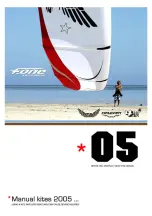
SECTION 3
CESSNA
MODEL 172N
EMERGENCY PROCEDURES
RPM taxi. Under these conditions, the light will go out at
higher RPM. The master switch need not be recycled since
an over-voltage condition has not occurred to de-activate
the alternator system.
If the over-voltage sensor should shut down the alternator, or if the
alternator circuit breaker should trip, a discharge rate will be shown on the
ammeter followed by illumination of the low-voltage warning light. Since
this may be a "nuisance" trip-out, an attempt should be made to reactivate
the alternator system. To do this, turn the avionics power switch off, check
that the alternator circuit breaker is in, then turn both sides of the master
switch off and then on again. If the problem no longer exists, normal
alternator charging will resume and the low-voltage light will go off. The
avionics power switch may then be turned back on.
If
the light illuminates
again, a malfunction is confirmed. In this event, the flight should be
terminated and/ or the current drain on the battery minimized because the
battery can supply the electrical system for only a limited period of time.
If
the emergency occurs at night, power must be conserved for later use of the
landing lights and flaps during landing.
3-18
1 July 1979
Содержание 17273274
Страница 8: ......
Страница 18: ......
Страница 38: ......
Страница 72: ......
Страница 92: ......
Страница 94: ......
Страница 116: ......
Страница 118: ......
Страница 123: ...SECTION 7 AIRPLANE SYSTEMS DESCRIPTIONS 7 6 Figure 7 2 Instrument Panel Sheet 1 of 2 CESSNA MODEL 172N 1 July 1979 ...
Страница 158: ......
Страница 160: ......
Страница 176: ......
Страница 178: ......
















































